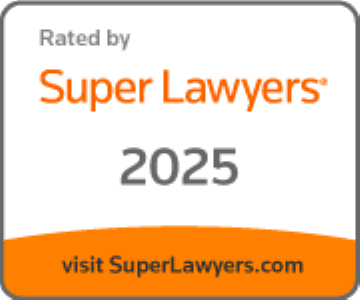Navigating the Use of Third-Party Trademarks in Competitive Advertising: A Legal Guide
In the highly competitive business landscape, companies often find it advantageous to reference competitors in their advertising to highlight their own products' strengths. Using third-party trademarks—marks not owned by your business—in competitive advertising can be an effective but risky strategy. It comes with legal complexities. Missteps can lead to costly litigation and damage to your reputation. This guide provides an overview of the proper use of third-party trademarks in competitive advertising, helping you navigate most legal considerations and how to implement a best practices approach to competitive advertising. Simply, understanding how to lawfully use competitors' trademarks in advertising can give your business a competitive edge while minimizing legal risks.
Understanding Trademarks in Advertising
When using third-party trademarks in advertising, it's important to understand not only the benefit of such advertising but also the legalities. Trademarks aren’t just logos or names—they embody a brand’s identity, reputation, and the quality it delivers. This brand identity allows consumers to trust a product or service based on their prior experiences and expectations. Legally, trademarks provide exclusive rights to prevent unauthorized use, helping companies retain uniqueness in the market.
It's importing to know what a trademark represents in advertising:
- Brand Identity: Trademarks encapsulate a company's brand identity, making it instantly recognizable to consumers. They serve as a visual or textual symbol that conveys the company's values, reputation, and the quality of its products or services.
- Legal Protection: Registered trademarks offer legal protection against unauthorized use, ensuring that only the trademark owner can use the mark in connection with specified goods or services. This exclusivity helps maintain the brand's uniqueness in the market.
- Consumer Trust: Consistent and proper use of trademarks builds consumer trust and loyalty. When consumers see a familiar trademark, they associate it with past experiences and expectations regarding the product or service.
Basic Principles of Trademark Use
Use Trademarks as Adjectives
Always use trademarks as adjectives modifying nouns, not as nouns or verbs. This practice reinforces the trademark's role in identifying the source of a product or service rather than becoming a generic term.
- Correct: "Enjoy a refreshing Coca-Cola beverage."
- Incorrect: "Grab a Coca-Cola."
By using the trademark as an adjective, you help maintain its distinctiveness and legal protection. Misusing it as a noun or verb can lead to genericization, where the trademark loses its unique association with a specific company.
Avoid Genericization of a Trademark
Don't use trademarks in a generic sense. Using a trademark generically can weaken its distinctiveness and may result in the loss of trademark rights.
- Incorrect: "Please make a xerox of this document."
- Correct: "Please make a photocopy of this document using the Xerox machine."
When trademarks become generic terms for a type of product or service, they can lose their protected status. Companies invest significant resources to prevent this, emphasizing the importance of proper usage.
What is Nominative Fair Use?
Nominative Fair Use
Nominative fair use allows you to use another company's trademark to identify their products or services, especially when:
- The product or service cannot be readily identified without the trademark.
- Only as much of the mark is used as necessary.
- The use does not imply endorsement or sponsorship by the trademark owner.
This legal doctrine recognizes that sometimes it's necessary to reference another's trademark to identify products or services accurately, especially in reviews, comparisons, or discussions. Simply, nominative fair use is a legal doctrine that allows a third party to use another party's trademark to identify their product or service, or to refer to the trademark owner.
Example: A car repair shop specializing in Toyota vehicles might advertise:
- "Expert repair services for Toyota cars."
This use is permissible as it identifies the services offered without suggesting Toyota's endorsement. However, using Toyota's logo or stylized branding without permission could cause Toyota to determine that you have crossed a legal boundaries for which they may send a cease & desist letter. To lean more about how to respond to cease and desist letters view our legal blog: Responding to Cease & Desist Letters
Legal Use of Competitors' Trademarks
Comparative and Referential Advertising
Comparative advertising involves referencing competitors' trademarks to compare products or services. When comparing products, ensure all statements about competitors are truthful, clear, and based on honest verifiable facts. Misleading or disparaging claims can lead your competition to file trademark infringement, defamation or trade libel lawsuits.
Comparative advertising is generally allowed if and only if the following is met:
- The comparison is truthful and not misleading.
- It doesn't create confusion about the source of the products.
- It doesn't disparage the competitor or their products unfairly.
Comparative advertising can be a powerful tool to highlight the advantages of your products over competitors, but it must be utilized thoughtfully and carefully to avoid legal pitfalls.
Example: An example of permissible comparative advertising:
- "Pepsi challenges Coca-Cola in taste tests. Try for yourself!"
This statement invites consumers to make their own comparisons without making false claims. It's essential to ensure that any comparisons are based on factual, verifiable data.
What is Trademark Dilution?
Dilution occurs when a famous trademark's distinctiveness is lessened, or its reputation is tarnished, even without consumer confusion. It can happen through blurring (weakening the mark's uniqueness) or tarnishment (harming the mark's reputation).
How to Avoid Trademark Dilution
- Don't Alter Trademarks: Avoid modifying or parodying trademarks in a way that could harm their reputation. Alterations can confuse consumers and diminish the trademark's distinctiveness.
- Use Respectfully: Do not use trademarks in a disparaging context or associate them with inferior or inappropriate products.
Example: Creating an ad that depicts a well-known trademark, like the Nike swoosh, in a negative light or altering it for comedic effect could be considered dilution.
Such use might tarnish the brand's image and lead to legal action.
Proper Trademark Usage Guidelines
Maintain Trademark Integrity
Advertisers should keep the trademark’s distinctive fonts and stylizations intact. Using a trademark in plain text or a different stylization can impair the integrity of the trademark and risks weakening its legal protection. Proper reproduction of your mark or a third party mark preserves integrity and lessens the chance you may be sued.
- Use Correct Formatting: Replicate the trademark's distinctive fonts, colors, and stylizations. This consistency helps maintain brand recognition and prevents consumer confusion.
- Include Registration Symbols: Use ® for registered trademarks and ™ for unregistered marks to indicate the trademark's legal status.
Example: When using the McDonald's logo, ensure it appears as the golden arches in the correct font and color. Any deviation might mislead consumers or violate the company's trademark rights.
Obtaining Permission for Trademark Use
When to Seek Permission
If your advertising campaign extensively features another company's trademark beyond nominative fair use, or you simply want to lower your risk of being sued, obtain written permission to use that company's trademark. This is especially important if you plan to use the trademark prominently or in a way that goes beyond mere identification in a textual format.
Benefits of Trademark Permission
- Legal Protection: Reduces the risk of infringement claims and potential lawsuits.
- Creative Freedom: Allows for more creative use of the trademark, which can enhance your advertising campaign.
Example: A marketing campaign wanting to feature Lego® bricks creatively, perhaps by building large sculptures or integrating them into your product displays, should seek permission from The Lego Group to ensure compliance and potentially collaborate on co-branding opportunities.
For advertising campaigns that prominently feature another company's trademark or use it beyond basic identification, written permission is crucial. This becomes especially important if your campaign may lead consumers to associate your brand with the trademark owner. For example, creative usage that goes beyond “nominative fair use”—the legal principle allowing trademark mention solely for identification, such as referring to products by their names—generally requires permission. Nominative fair should be considered when using another party's trademark when and wherever possible to avoid potential litigation.
Acknowledging Trademark Ownership
Proper Attribution
Acknowledge trademark ownership to avoid confusion about ownership or endorsement. This can be done through disclaimers or footnotes in your advertising materials.
Example: "Windows® is a registered trademark of Microsoft Corporation."
Including such statements clarifies that while you reference the trademark, you do not claim ownership or imply an official partnership. A simple acknowledgment, such as “Windows® is a registered trademark of Microsoft Corporation,” helps to signal that you respect Microsoft’s trademark rights and aren’t implying a partnership. This helps reinforce trust with both the trademark holder and consumers.
Avoiding False Endorsement
Don't Imply Endorsement Without Consent
Avoid language or imagery that suggests the trademark owner endorses your product unless you have explicit permission. Implying endorsement can mislead consumers and infringe on the trademark owner's rights. If your advertising references a brand, ensure that it doesn’t imply endorsement without permission. Misleading language or images that suggest the trademark owner endorses your brand can lead to legal issues, as trademark owners have the right to control endorsements and associations with their brand.
Example:
- Incorrect: "Endorsed by Apple® engineers."
- Correct: "Compatible with Apple® devices."
The correct example accurately describes your product's compatibility without falsely suggesting that Apple endorses or is affiliated with your product.
Using Competitors' Trademarks
Truth is Paramount
- Be Truthful: Ensure all statements are accurate and verifiable.
- Avoid Disparagement: Do not defame or belittle competitor products. Focus on factual comparisons rather than subjective opinions.
Example: "Our smartphone has a battery life that lasts 20% longer than Samsung® Galaxy models based on independent testing."
This statement provides a factual comparison and specifies the basis for the claim, reducing the risk of legal issues. Be sure you have the technical and specific testing's that support the additional 20% battery life!
Respecting Trademark Registration Symbols
Use Appropriate Symbols
Include the ® or ™ symbols as used by the trademark owner to denote registration status. This demonstrates respect for the trademark's legal standing and informs consumers of its protected status.
Example: "Starbucks® offers a new blend this season."
By using the ® symbol, you acknowledge that "Starbucks" is a registered trademark, which can help prevent any confusion regarding ownership.
Obtaining Trademark Usage Guidelines
Many companies provide trademark usage guidelines on their websites, outlining how their trademarks can be used by others. Adhering to those published guidelines helps maintain a good relationship with the trademark owner and may reduce your legal risks.
Example: Refer to Google's brand guidelines when using their trademarks in your advertising. These guidelines specify permissible uses, such as how to display the Google logo or mention their products.
Use of Celebrity Likenesses
Personality Rights
Using a celebrity's image or likeness requires consent due to personality rights laws, which protect individuals from unauthorized commercial exploitation. Celebrity likenesses are protected under “right of publicity” laws, which give individuals control over the commercial use of their name, image, and persona. Its not only considered a violation of their personal rights, but you can quickly get into legal legal action for unauthorized use!
Example: Using a photo of Beyoncé in an ad without permission could lead to legal action for violating her right of publicity. Always obtain written consent when featuring celebrities in advertising.
In White v. Samsung Electronics America, Inc., Samsung used a robot resembling Vanna White in a commercial, leading to a lawsuit where the court held that White’s personality rights were infringed despite her likeness not being directly used.
Trade Dress Usage
What is Trade Dress?
Trade dress refers to the visual appearance of a product or its packaging that signifies the source, including size, shape, color, texture, and design.
Example: The distinctive shape of the Coca-Cola bottle is protected trade dress. Copying this design could mislead consumers and infringe on Coca-Cola's rights.
Caution: Before incorporating elements that resemble another company's trade dress, consult legal counsel to ensure compliance and avoid infringement.
Trade dress encompasses the unique, non-functional visual elements of a product or its packaging that signal its origin. This can include aspects like size, shape, color, texture, or specific design choices that consumers associate with a particular brand. Trade dress is legally protected when it’s distinct enough to identify the product’s source and prevent consumer confusion.
Former Trademark Usage
Caution with "Abandoned" Trademarks
Even if a trademark appears unused, legal rights may still exist. Some trademarks may be dormant but not legally abandoned, and unauthorized use can result in infringement claims. When considering the use of a trademark that appears to be "abandoned" or unused, it's essential to exercise caution. While it may seem tempting to repurpose a name or logo that isn’t actively used in the market, trademark law offers specific protections that can still apply to what may appear to be "former" or "inactive" marks.
Monitoring Evolving Trademark Law
Trademark law is dynamic, shaped by legislation, court rulings, and evolving business practices. Staying updated on these changes is essential for maintaining a strong, legally compliant brand presence. Here are practical steps to help you stay informed and compliant as trademark law evolves:
- Subscribe to Legal Updates: Laws surrounding intellectual property, including trademarks, can change due to federal or state legislative updates and court decisions. To ensure compliance, it’s beneficial to establish an ongoing relationship with intellectual property counsel who can provide insights into recent changes. Regular consultations allow businesses to understand the implications of new rulings or policies and make adjustments to branding, marketing, or product development practices as needed.
- Engage with Industry Groups: Many legal firms, intellectual property organizations, and government agencies offer free updates or newsletters covering recent changes in trademark law. Becoming active in intellectual property-focused associations, such as the International Trademark Association (INTA) or the American Intellectual Property Law Association (AIPLA), provides additional resources for staying current on trademark law.
Being proactive in keeping up with new and evolving trademark rules and registrations helps mitigate risks associated with legal non-compliance. By staying informed and adaptable, businesses reduce the risk of legal disputes, protect their brand reputation, and safeguard their intellectual property investments. The effort spent on regular legal check-ins, subscribing to updates, and engaging with industry resources can prevent costly lawsuits and keep you ahead of the legal curve!
Trademark Use in Advertising FAQ
What is a trademark and why is it important in advertising?
A trademark is a unique symbol, word, phrase, design, or combination that identifies and distinguishes the source of goods or services from those of others. It’s important in advertising because it helps build brand recognition, fosters consumer trust, and legally protects the brand's identity.
Build Brand Recognition: Help consumers identify and differentiate products, making marketing efforts more effective.
Establish Trust: Signify quality and consistency, which can influence purchasing decisions and foster customer loyalty.
Provide Legal Protection: Guard against unauthorized use by others, ensuring your brand maintains its unique identity in the marketplace.
How do I know if a trademark is already in use or registered?
To find out if a trademark is already in use or registered, start by searching the U.S. Patent and Trademark Office (USPTO) database, TESS, which includes registered trademarks and pending applications in the U.S. Make sure to check for variations in spelling, abbreviations, and similar wording to catch potential conflicts. Additionally, you can review state trademark databases, as trademarks can also be registered at the state level. Lastly, perform a broader search online and on social media to identify any unregistered but actively used trademarks that could still pose legal issues.
Conduct a Trademark Search: Use online
databases like the USPTO's Trademark Electronic Search System (TESS) or the WIPO Global Brand Database to check for existing trademarks.
Hire a Professional: Consider engaging a trademark attorney or a search service for a comprehensive search, including common law uses not registered officially.
Check Business Directories and Online Platforms: Look for unregistered but in-use trademarks by searching business names, domain registrations, and social media handles.
Can I use someone else’s trademark in my advertising materials?
Generally, you can use another's trademark under nominative fair use for purposes like comparison, commentary, or criticism, provided:
The Use is Necessary: The product or service can't be identified without using the trademark.
Minimal Use: Only use as much of the mark as needed for identification.
No Endorsement Implied: The use does not suggest sponsorship or endorsement by the trademark owner.
However, always exercise caution and consider consulting legal counsel to ensure compliance.
What is the difference between ®, ™, and © symbols in advertising?
The symbols ®, ™, and © serve different purposes in advertising, each indicating a specific type of intellectual property protection. ® denotes a federally registered trademark, meaning the mark has been officially registered with the U.S. Patent and Trademark Office (USPTO), giving the owner exclusive rights to use it for specific goods or services.
® (Registered Trademark): Indicates a trademark registered with the relevant government agency, providing legal protection and exclusive rights.
™ (Trademark): Denotes a trademark claim on a mark not yet registered. It's used to alert others of your claim to the mark.
© (Copyright): Represents protection of original works like literature, art, music, and software code, covering the expression of ideas rather than the ideas themselves.
Using these symbols correctly informs the public of your rights and can deter infringement.
How can I protect my own trademarks in advertising?
To protect and strengthen your brand, it's essential to take proactive steps in trademark management. Register your trademarks with the appropriate governmental agency to secure legal protections and exclusive rights to your brand elements. Use the correct symbols, like ® for registered trademarks and ™ for those pending or unregistered, to visibly assert ownership. Regularly monitor for unauthorized use online and offline, and take swift legal action against infringement to prevent brand dilution and uphold exclusivity. Lastly, educate employees and partners on proper trademark usage to ensure consistent and compliant representation across all channels.
Register Your Trademarks: Obtain legal protection by registering with the appropriate governmental agency.
Use Proper Symbols: Display ® for registered trademarks and ™ for unregistered trademarks to assert your rights.
Monitor Usage: Regularly watch for unauthorized use of your trademarks online and offline.
Enforce Your Rights: Take prompt legal action against infringement to prevent dilution and maintain exclusivity.
Educate Partners and Employees: Provide guidelines on proper trademark use to ensure consistent and correct usage across all channels.
Are there any exceptions for using trademarks in comparative advertising?
Yes, comparative advertising is allowed when:
Truthful and Non-Deceptive: The comparisons are accurate and based on factual information.
No Confusion: It doesn't create confusion about the source or sponsorship of the products.
Fair Competition: The use adheres to principles of fair competition and doesn't unfairly discredit or disparage the competitor.
Always ensure compliance with local laws and regulations, as some jurisdictions have specific rules governing comparative advertising.
Comparative advertising can be an effective marketing strategy, but it must be handled carefully to avoid legal issues. This type of advertising is generally allowed when it meets certain criteria: the comparisons must be truthful, non-deceptive, and based on accurate, factual information. Additionally, the ad should avoid causing confusion about the source or sponsorship of the products involved. Fair competition principles should also be followed, meaning the advertisement must not unfairly discredit or disparage competitors. It's essential to check local laws and regulations, as some jurisdictions impose specific rules governing comparative advertising to ensure transparency and fairness.
What constitutes trademark infringement in advertising?
Trademark infringement in advertising occurs when a party uses a trademark that is identical or confusingly similar to a registered mark without permission, creating a likelihood of consumer confusion. This confusion can relate to the origin, sponsorship, or approval of the goods or services being advertised, leading consumers to believe the infringer's products are associated with or endorsed by the trademark owner. Infringement may also arise from using a trademark in a way that dilutes its distinctiveness or harms the brand’s reputation. Courts consider factors like similarity of the marks, relatedness of the goods or services, and evidence of consumer confusion when determining infringement.
Unauthorized Use: A trademark is used without the owner's permission.
Likelihood of Confusion: The use causes confusion among consumers about the source, sponsorship, or affiliation of the products or services.
Dilution or Tarnishment: The use diminishes the trademark's uniqueness or harms its reputation.
Implied Endorsement: Suggesting the trademark owner endorses or is affiliated with your product without consent.
Understanding these factors helps avoid infringing on others' trademarks and the associated legal consequences.
Can I use a competitor’s trademark as a keyword for online advertising?
Using competitor trademarks in advertising is a legally sensitive area that requires careful consideration. Some advertising platforms, like Google, may allow limited use of competitor trademarks under specific conditions, though these policies can vary widely. However, this practice carries a risk of trademark infringement; using a competitor's trademark in a way that causes confusion or appears to undermine fair competition may lead to legal disputes. Before pursuing this strategy, it's wise to consult with a legal expert to fully understand the risks involved and ensure that your advertising complies with platform policies and trademark regulations.
Permitted in Some Cases: Search engines like Google may allow it under certain conditions, but policies vary.
Risk of Infringement: Using a competitor's trademark can lead to confusion or be considered unfair competition, resulting in legal challenges.
Consult a Lawyer: Consult legal counsel before proceeding to understand the risks and ensure compliance with advertising platform policies and trademark laws.
How does the fair use doctrine apply to trademark use in advertising?
The fair use doctrine allows limited use of a trademark in advertising under certain conditions without it being considered infringement. There are two types of fair use: descriptive fair use and nominative fair use.
Nominative Use: Referring to the trademarked product or service for identification purposes when no reasonable alternative exists.
Descriptive Use: Using the trademark to describe characteristics of your own product, not as a brand identifier.
Parody or Commentary: Using the trademark in a transformative way for commentary, criticism, or parody, protected under free speech rights.
Each case is fact-specific, so it's advisable to seek legal advice to determine if fair use applies.
What steps should I take if I receive a trademark infringement notice for my advertising?
Facing a trademark infringement notice requires immediate, prompt action to protect your interests. First, consult an attorney to understand the specifics of the claim and your legal rights. Temporarily cease the allegedly infringing use to prevent further complications. Respond to the notice promptly and professionally, acknowledging receipt and showing willingness to address the matter. With your attorney, evaluate the merits of the claim and explore possible defenses, such as fair use.
• Consult an Attorney: Get legal advice immediately to understand the allegations and your rights.
• Cease the Infringing Use: Temporarily halt the use in question to prevent further potential infringement.
• Respond Promptly and Professionally: Acknowledge receipt of the notice and communicate your intention to address the matter.
• Assess Your Position: With legal counsel, determine whether the claim has merit and explore possible defenses like fair use.
• Consider Settlement Options: If appropriate, negotiate a resolution to avoid litigation, which might include modifying your advertising or obtaining a license.
Timely and appropriate action can mitigate legal risks and preserve business relationships.


Have an idea for a blog? Click and request a blog and we will let you know when we post it!











